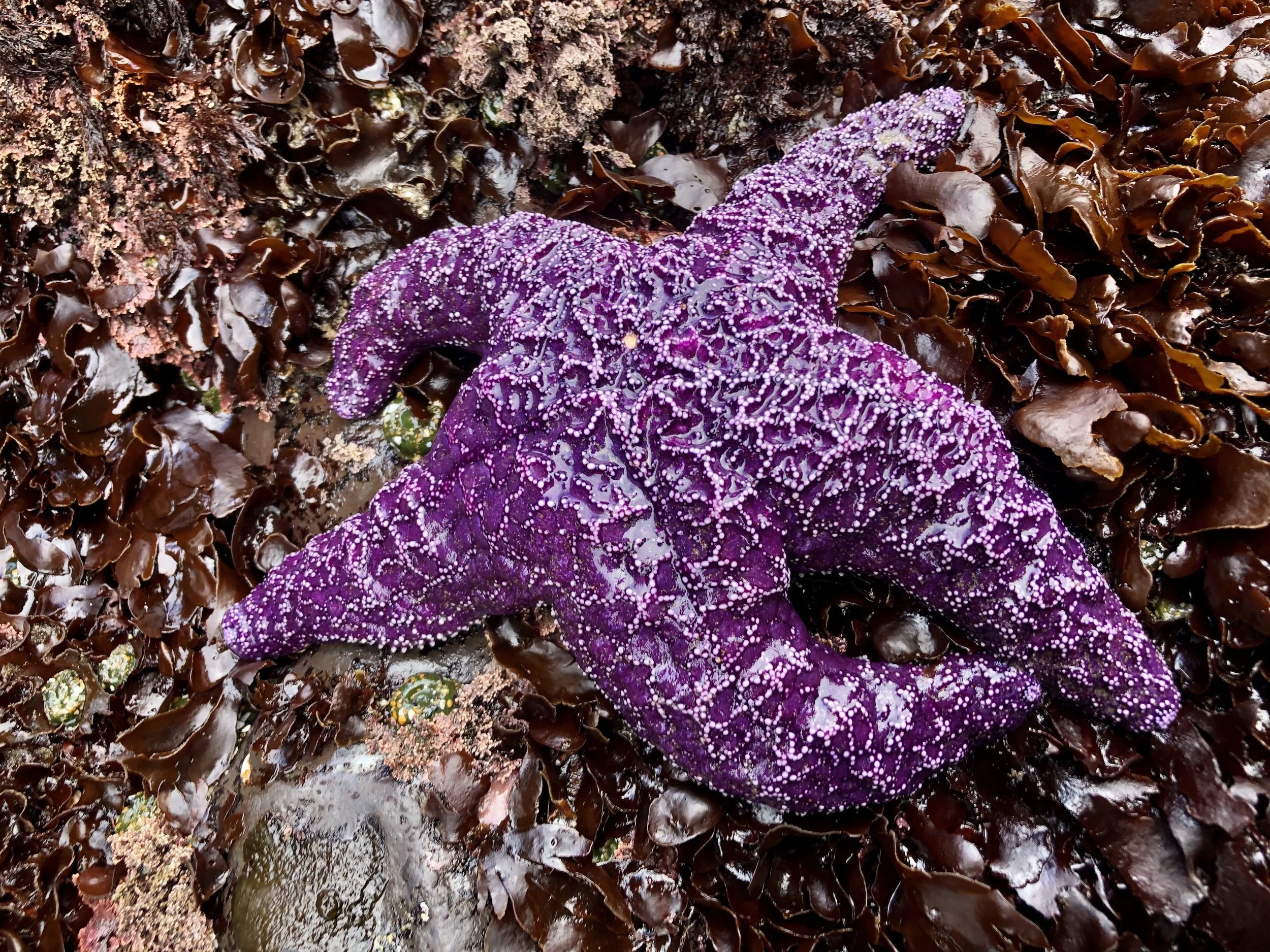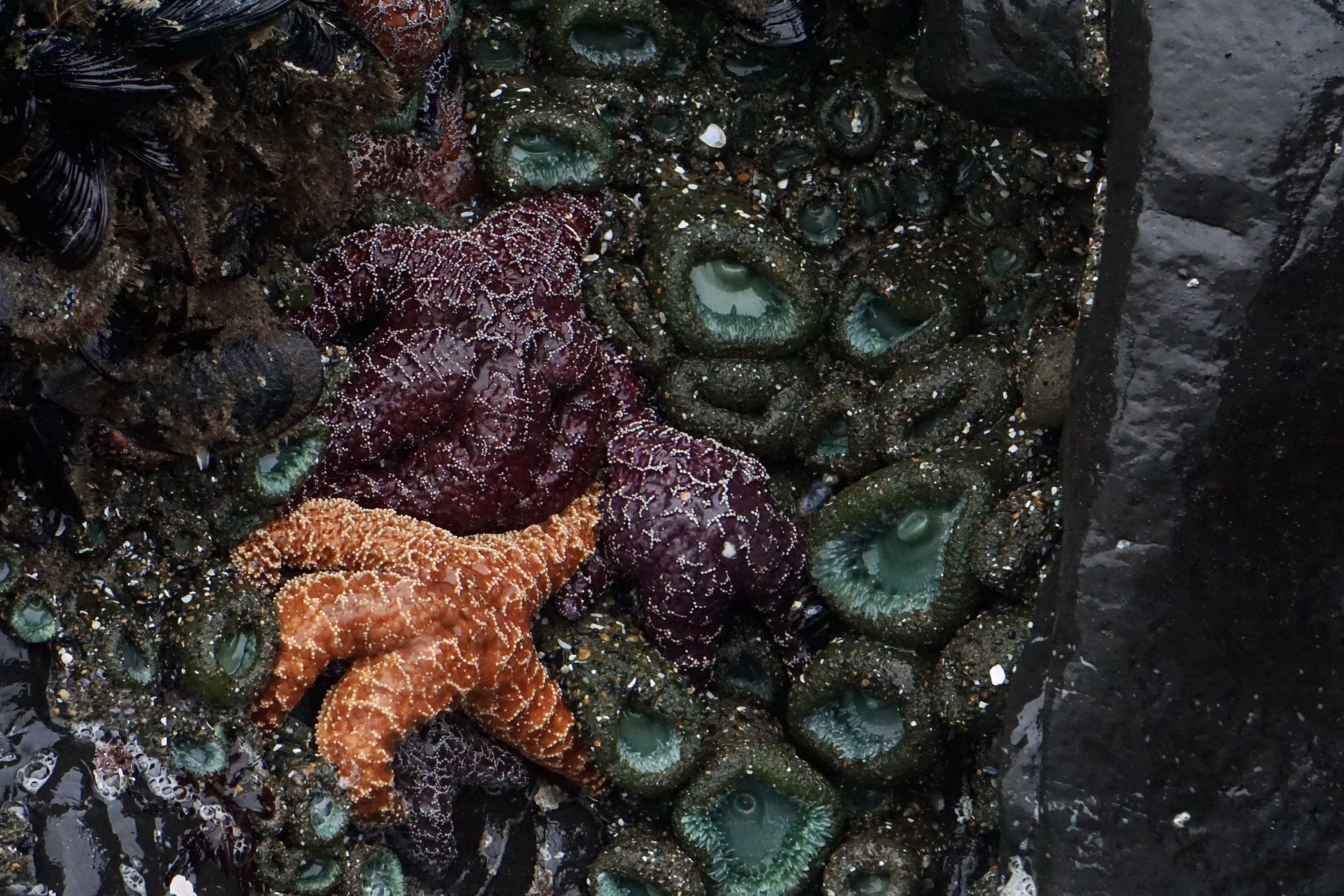Returning to a starring role
Scientists buoyed by rebound of Oregon’s stricken sea stars



By Michael Edwards
For the TODAY
In the cold, dark depths off Cascade Head, a sunflower sea star’s 15,000 hydraulically manipulated tubed feet propel the bicycle wheel-shaped creature at 200 feet per hour across the rocky reef. The tip of each of the sea star’s 24arms houses a crude eye. which won’t impress the ophthalmologist but will keep the animal from straying from its hunting grounds. When it detects its preferred prey, the purple sea urchin, the 13-pound sunflower sea star envelops the spiny echinoderm with its powerful arms, extrudes its stomach through its mouth into its prey and digests and devours the urchin’s soft flesh. The sunflower sea star replicates this hunt and feast five times a day.
From the warm Pacific waters off Baja Mexico, 2,000 miles north to the frigid inlets of southeast Alaska, billions of sunflower sea stars made a stable living eating sea urchins. Beginning in 2013 and lasting through 2017 however, sea star wasting syndrome devastated Pacific sea star populations.
Initially, the disease causes lesions and lethargy in the infected animal. Then, the stricken creature’s arms detach from its body and stumble off into the abyss. Finally, according to scientists at NOAA “within days of becoming sick, the sea stars disintegrate into gooey masses.” Over a five-year period, billions of sea stars met this gruesome fate. And, though experts aren’t sure what causes sea star wasting syndrome, they have hypothesized that the ocean “heat blobs” that coincided with the onset of the syndrome exacerbated the problem.
While species like Oregon’s familiar ochre stars have recovered from the mass die off, sunflower sea stars, in much of their historic range, have not. Marine scientists believe that if populations from Monterey, California, to southern Washington state are to return, legal protections coupled with a robust reintroduction program will be required. Along with the proposed protections and reintroduction plans, aquariums and universities are working to solve the puzzle of sea star wasting syndrome.
Oregon Coast Aquarium Aquarist Tiffany Rudek and her colleague Sea Jelly Specialist Evonne Mochon Collura, developed and implemented a treatment for the syndrome. According to an article from the Association of Zoos and Aquariums, the aquarium’s symptomatic sea stars are “placed into a cold-water holding area, and a buffer containing specific trace elements is applied. They are given a probiotic to prevent harmful bacteria growth and infection and undergo medicated baths to remove parasites and fungi.” The treatment regimen is being shared with facilities that also care for and study sea stars. Though it will not bring the sunflower sea star population back from the brink, it will provide insight for scientists looking to crack the code of this complex disease.
Well-meaning citizens might ask why the disappearance of a few billion sunflower sea stars matters. Principally, when their numbers were in the billions, they ate massive numbers of sea urchins. Without the sea stars to keep them in check, urchins have multiplied rapidly and leveled Pacific kelp forests; giant kelp in California’s cool waters and bull kelp in the cold north Pacific. According to NOAA scientists, the ravenous urchins create vast kelp barrens and after they have eaten all of the kelp on their patch of ocean floor, the adaptable creatures enter into a “zombie state” where they wait in repose for the kelp to return so they can wake from their slumber and graze again.
The fast-growing Pacific kelp forests are havens for numerous sea creatures including commercially important rockfish and abalone. And, collectively, kelp forests have the capacity to sequester the same amount of carbon dioxide that New York state releases each year.
Any visitor to the Oregon Coast Aquarium’s sunflower sea star exhibit will attest that the giant echinoderms are otherworldly members of the animal kingdom. Their return to the Pacific Coast waters of North America is integral to the flourishing of kelp forests and to the creatures that those undersea forests nurture.
To see orange and purple ochre stars, visit an Oregon Coast tide pool during a minus tide. They will likely be bunched together in crevices and affixed to sea-battered boulders. During low tides, the rocks west of Chinook Winds Casino Resort are a great place to observe ochre stars and witness the results of their predations on their preferred prey, the California mussel.
• If you have been waiting patiently for a witty, accurate, utterly ridiculous, PG-13 rated nature documentary series to emerge, you are in luck. Some of the sea star information above was gathered from a YouTube video produced by Ze Frank titled “True Facts: Sea Stars.” If you know a teenager who needs a push in the old science department, handing them the keys to Ze’s odd world might ignite that latent mental flame.
